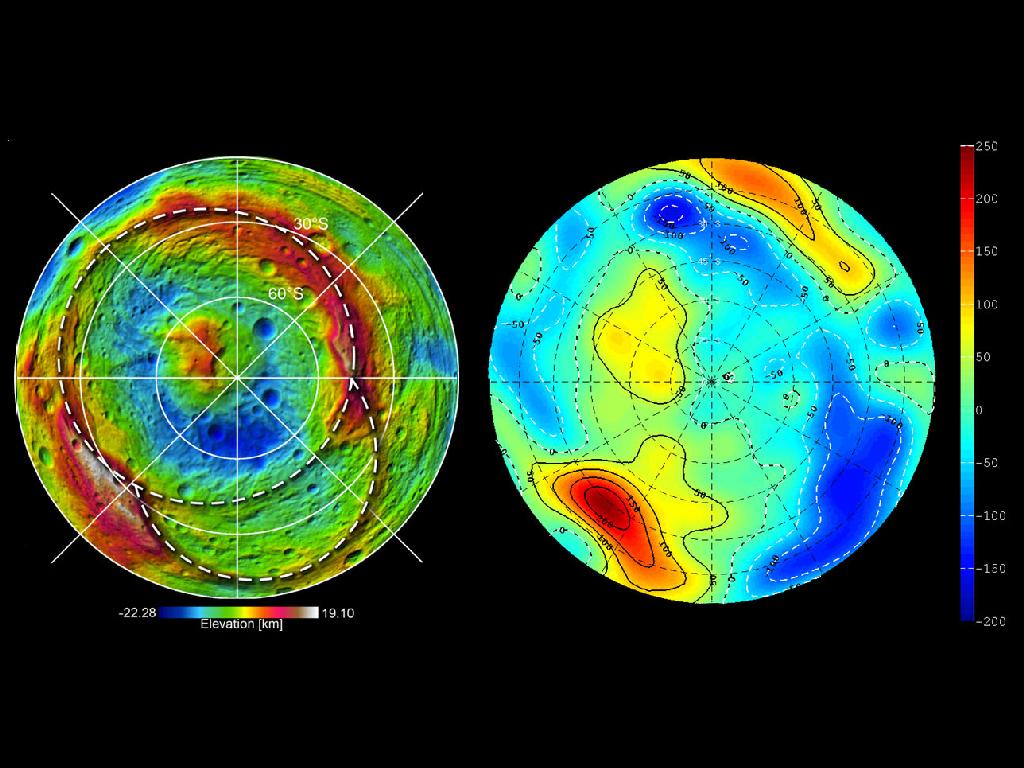NASA Probe Gets Extended Stay at Huge Asteroid Vesta

A robotic probe currently studying the giant asteroid Vesta is going into bonus rounds in the asteroid belt, with NASA clearing the spacecraft to spend 40 extra days gleaning more of the space rock's secrets.
The Dawn spacecraft has been circling Vesta, which is the second most massive object in the asteroid belt between Mars and Jupiter, since last July, and is now slated to stay until Aug. 26. It is the first spacecraft to visit the asteroid, and will have spent more than a year in its environs by the time it leaves.
"Dawn has beamed back to us such dazzling Vestan vistas that we are happy to stay a little longer and learn more about this special world," Christopher Russell, Dawn’s principal investigator at UCLA, said in a statement. "While we have this one-of-a-kind opportunity to orbit Vesta, we want to make the best and most complete datasets that we can."
At about the length of Arizona, Vesta is thought to be an intact chunk of the ingredients used to make the solar system around 4.5 billion years ago. Scientists suspect it may be what's called a protoplanet, and might have developed into a full-fledged planet of its own if things had turned out differently.
When Dawn leaves Vesta in August, it will head to the asteroid belt's other large inhabitant, Ceres, which is as wide as Texas and is classified as a dwarf planet. The probe is scheduled to arrive in February 2015 (the extended stay at Vesta won't push back this schedule, scientists say).
But before departing Vesta, Dawn will make some extra observations from its current low-altitude mapping orbit, at an average altitude of 130 miles (210 kilometers). The probe will use its gamma-ray and neutron detector to complete maps of the elements that compose Vesta's surface. [Video: Giant Asteroid Vesta's Gravity is Lumpy]
Already, Dawn has discovered that Vesta has an abundance of iron- and magnesium-rich rocks, similar to those created by volcanism on Earth, and bands of different exposed minerals on the slopes of the Tarpeia crater near the asteroid's south pole.
Get the Space.com Newsletter
Breaking space news, the latest updates on rocket launches, skywatching events and more!
"Dawn now enables us to study the variety of rock mixtures making up Vesta's surface in great detail," said Harald Hiesinger, a Dawn participating scientist at Muenster University in Germany. "The images suggest an amazing variety of processes that paint Vesta's surface."
Dawn has also been measuring the surface temperatures across Vesta, resulting in the highest-resolution temperature maps of any asteroid visited by a spacecraft. The space rock displays range from temperatures as warm as minus 10 degrees Fahrenheit (minus 23 degrees Celsius) in the sun, to as chilly as minus150 degrees F (minus 100 degrees C) in its shadowed areas.
The $466 million Dawn spacecraft launched in 2007.
NASA plans a news conference Thursday (May 10) at 2 p.m. EDT to discuss Dawn's latest findings about Vesta.
Follow SPACE.com for the latest in space science and exploration news on Twitter @Spacedotcom and on Facebook.
Join our Space Forums to keep talking space on the latest missions, night sky and more! And if you have a news tip, correction or comment, let us know at: community@space.com.

Space.com is the premier source of space exploration, innovation and astronomy news, chronicling (and celebrating) humanity's ongoing expansion across the final frontier. Originally founded in 1999, Space.com is, and always has been, the passion of writers and editors who are space fans and also trained journalists. Our current news team consists of Editor-in-Chief Tariq Malik; Editor Hanneke Weitering, Senior Space Writer Mike Wall; Senior Writer Meghan Bartels; Senior Writer Chelsea Gohd, Senior Writer Tereza Pultarova and Staff Writer Alexander Cox, focusing on e-commerce. Senior Producer Steve Spaleta oversees our space videos, with Diana Whitcroft as our Social Media Editor.









